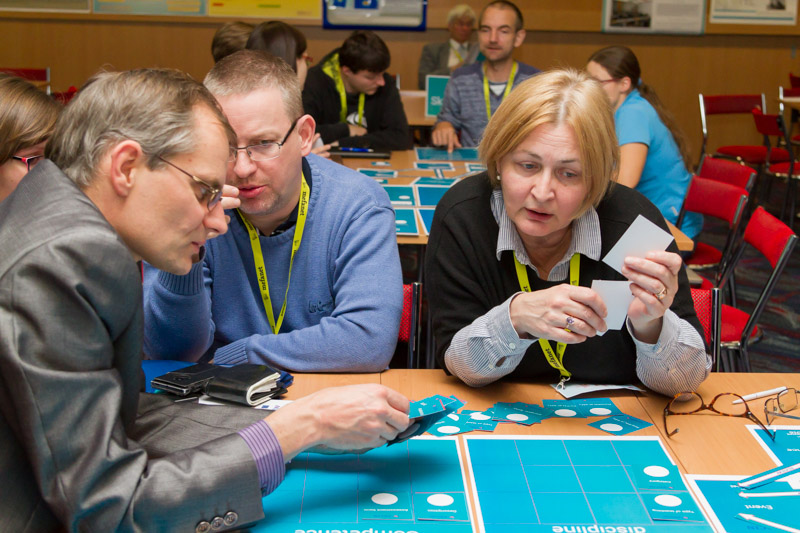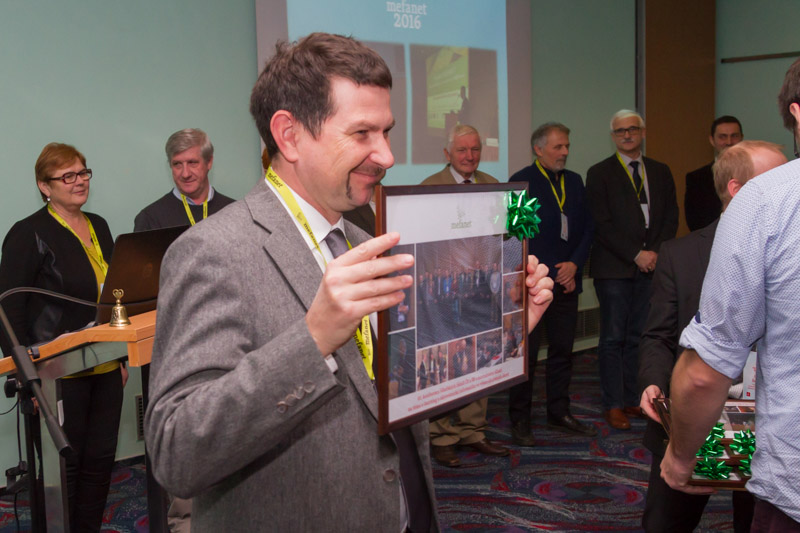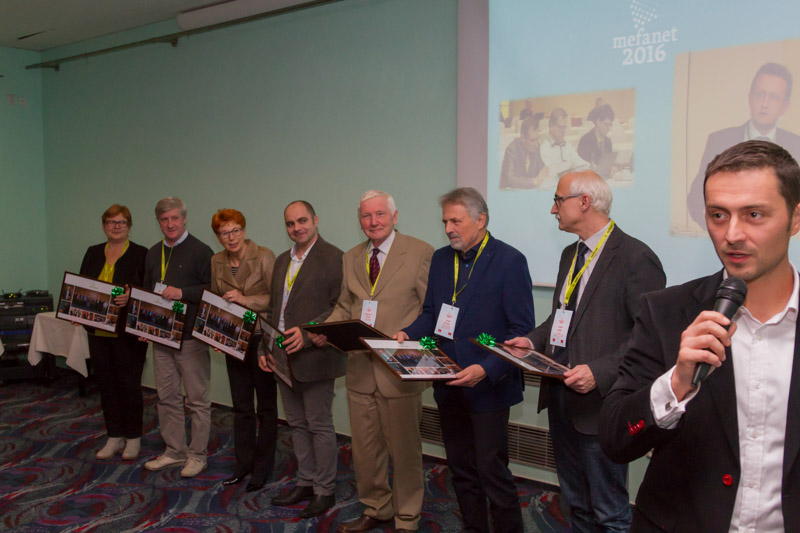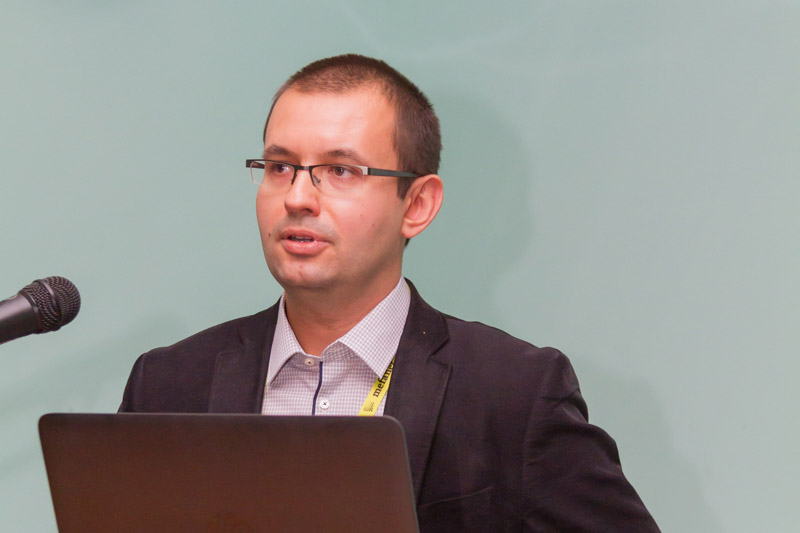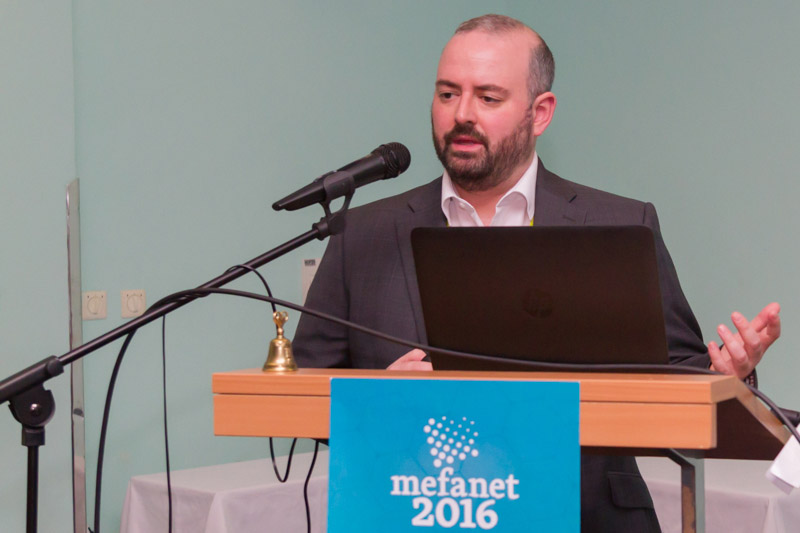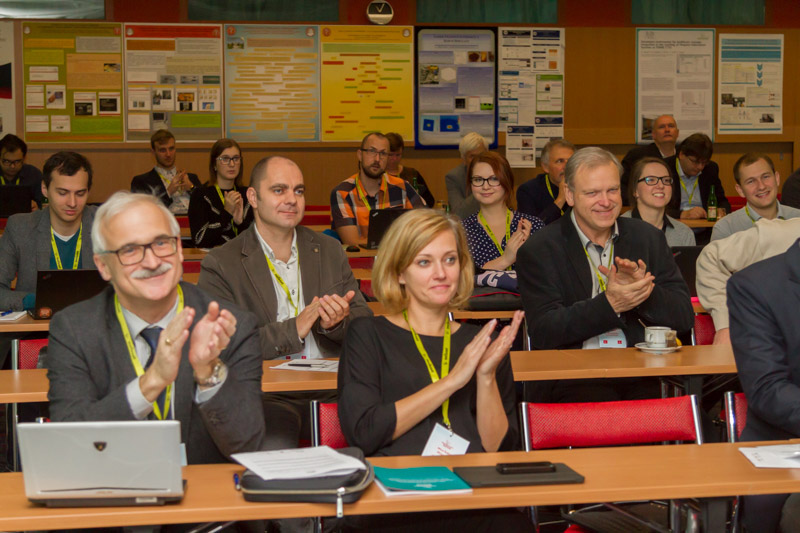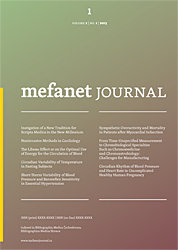
MEFANET Journal 2017; 5(2): 69-71
EDITORIAL MATERIAL
MEFANET, the Czech-Slovak network of medical faculties, celebrated a jubilee
Martin Komenda*, Daniel Schwarz, Jakub Gregor, Lenka Šnajdrová
Institute of Biostatistics and Analyses, Faculty of Medicine, Masaryk University, Czech Republic
* Corresponding author: komenda@iba.muni.cz
Abstract
Article history:
Received 2 February 2017
Available online 15 June 2017
Download PDF
Supplementary material
The pace of development and the tide of events are very relative terms. From the point of view of our planet or the life on Earth, ten years represent only a tiny fraction in a very long timeline. However, for the organism called MEFANET (MEdical FAculties NETwork), ten years proved to be a true evolution period, during which it became an important member of the European community dealing with medical education. Moreover, if we take into account that modern information and communication technologies play a key role in MEFANET activities, it is obvious that the days of MEFANET origin might seem as long ago as the century of steam, at least for our youngest colleagues.
Keywords
MEFANET; medical informatics; e-learning; virtual patient; e-assessment
Figure 1. MEDCIN workshop
Figure 2. Celebration of the MEFANET conference 10th anniversary
Figure 3. Celebration of the MEFANET conference 10th anniversary
Figure 4. Andrzej Konowicz
Figure 5. Luke Woodham
Figure 6. Friendly atmosphere of the conference – one of the things that have not changed during ten years
By an annual tradition, teachers from medical faculties, experts in information technologies and other involved people arrived to Brno at the end of November, this time to Hotel Continental, to celebrate the MEFANET’s jubilee. A standalone ceremony was dedicated to the 10th anniversary of the beginnings of joint activities; however, memories of various stages of network development since its unofficial start up to these days – as well as future prospects – ran through the entire conference programme. For many speakers, especially those who had “got in on the ground flood”, this meant that their talks were not just matter-of-fact and work-related, but rather personal.
“Ten years ago, we realised together with our colleagues that modern information technologies can substantially help us in medical education. But we found out very soon that the development of electronic teaching tools is not only demanding in terms of professional expertise, but is also time-consuming and expensive; a single faculty of medicine could not possibly cover the entire curriculum, and mutual cooperation seemed to be a very advantageous option. We have therefore started to share these teaching tools via our educational portals”, explained Prof. Stanislav Stipek from the First Faculty of Medicine at Charles University (1st FM CU). This cooperation in cyberspace ultimately led to a spontaneous development of a community of teachers at medical faculties and IT enthusiasts – a community which was compact but nevertheless open to new members, branches of study, and ideas. “For me, the jubilee marks ten years since getting to know many colleagues from Czech and Slovak medical faculties. Many of these professional links have grown into true friendships over time”, said Assoc. Prof. Daniel Schwarz from the Faculty of Medicine at Masaryk University (FM MU), who is currently Chair of the Coordinating Council of the MEFANET project. MEFANET’s reputation has gradually spread beyond the borders of the former Czechoslovakia, and the network nowadays plays an important role in many research projects and activities across Europe and Asia. “During the 10 years of its activities, MEFANET has developed into an astonishing, internationally recognised body. MEFANET made it possible for teachers to create, to publish and to become accepted on an international level. Thanks to MEFANET, Czech and Slovak medical students now have access to attractive teaching materials from other faculties. I consider MEFANET to be more than just a Czech-Slovak institution; it is something that brings new and high-quality solutions to our future work”, concluded Assoc. Prof. Jaroslav Majerník from the Faculty of Medicine at Pavol Jozef Safarik University in Kosice – an impression which many other conference participants certainly shared with him.
But let us return from looking back to the conference programme itself, because even celebrations of the 10th anniversary certainly were not a reason why participants should not share their news from the area of information technologies in relation to education of future doctors and healthcare professionals. Conference organisers maintained the programme scheme innovated in the last year, starting with two technical workshops on the first conference day. The first workshop – led by a team from the 1st FM CU, Academy of Science of the Czech Republic, and the FM MU – was focused on the development and assessment of tests. Workshop participants could get the feel of putting together a high-quality test and its individual items in a way which would objectively assess the students’ knowledge, and which would also distinguish between better and worse students. Practical examples were then discussed as to whether specific test questions (including their respective answers) seem to be well phrased or not, how difficult they are, and whether any modifications to those questions should be made. The second workshop, dedicated to the international project MEDCIN, was prepared by FM MU representatives together with their foreign partners from the Karolinska Institutet, Aristotle University, and St George’s, University of London. The MEDCIN project deals with the parametrisation of medical education and with the standardisation of medical curricula, and the respective workshop highlighted several of its important issues. Workshop participants could identify themselves with members of management of a new virtual faculty of medicine. Foreign partners as project co-investigators also got the floor: they introduced the structure of education of general medicine at their institutions in Sweden, Greece, and the UK.
The second conference day was dedicated to lectures and thus had a more traditional character. The day’s programme started with a symposium focusing on the education of nurses, particularly on its practical part in clinical settings. The speakers presented outcomes of several studies which took place at several faculties of health sciences in the Czech Republic and Slovakia, and which assessed the students’ attitudes and experience with practical education and training in hospitals.
In the keynote lecture session, which followed the above-mentioned ceremony, the floor was given to two foreign guests. The name of Andrzej Kononowicz from the Jagiellonian University Medical College (Kraków, Poland) is well known to anyone interested in virtual patients. It is therefore obvious that the first keynote lecture was dedicated to this issue. Dr Kononowicz pointed out that the concept of virtual patients and simulations is not new at all: they have been mentioned in the literature since 1960s. Paradoxically, the most dynamic changes and development in this area over the last 50 years have not occurred due to technology, but thanks to the introduction of virtual patients and simulations into the education process. Many studies have been published since then, undoubtedly supporting the use of this form of education, but also debunking numerous myths and expectations which often come along with new technology. The second speaker, Luke Woodham from St George’s, University of London, focused on another current pedagogical phenomenon: the so-called Massive Open Online Courses (MOOCs). These interactive online courses enable hundreds to thousands of users to learn a specific topic simultaneously, which surely makes sense in quite a few disciplines and topics. On the other hand, medical education often requires more formal and detailed assessment of students as well as personal interaction, and this is where MOOCs encounter certain obstacles. However, one must always keep in mind that any technology only provides tools, and that the manner and effectiveness of using them are up to the user.
The topical session was dedicated to technology and e-learning in radiology, and was held under the auspices of the Czech Radiological Society. Despite the fact that a number of modern branches of medicine are based on imaging techniques, which thus play an essential role, education in radiology is inadequate: in the curriculum of general medicine, the duration of courses dealing with radiology is very short, if there are any courses at all. To give just a few examples, the speakers pointed out a poor education in the area of indication of correct techniques, and warned about relatively strict legislative requirements, which restrict the practical part of training. Although CT, MRI or ultrasound images are frequently found in teaching materials of other clinical disciplines, it will be quite a long way for radiology itself to adopt modern teaching approaches.
The conference was concluded by a session dedicated to short communications, presenting specific news, methods and tools that have been developed and are currently available at individual faculties of medicine and faculties of health sciences. It is surely worth mentioning that each author presented either an interesting software tool or an elaborate analysis of a large dataset – all of these contributing to the support of medical education based on modern technologies.
More details on the conference, including a photo gallery and presentations for download, are available at http://www.mefanet.cz/index-en.php?pg=conference.
Supplementary material
Please cite as:
Komenda M, Schwarz D, Gregor J, Šnajdrová L. MEFANET, the Czech-Slovak network of medical faculties, celebrated a jubilee. MEFANET Journal 2017; 5(2): 69-71. Available at WWW: http://mj.mefanet.cz/mj-20170202.
This is an open-access article distributed under the terms of the Creative Commons Attribution-NonCommercial-ShareAlike 3.0 License (http://creativecommons.org/licenses/by-nc-sa/3.0/), which permits unrestricted use, distribution, and reproduction in any medium, provided the original work, first published in the MEFANET Journal, is properly cited. The complete bibliographic information, a link to the original publication on http://www.mj.mefanet.cz/, as well as this copyright and license information must be included.
